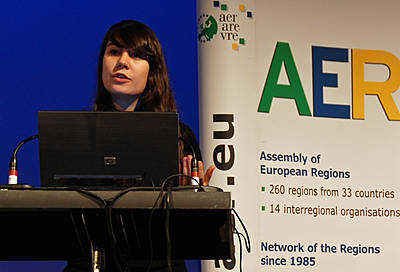By: Yannick Brusselmans
“You are the mobility generation.” Italian journalist Sergio Nava uttered the tried-but-true cliché a number of times during the round table he moderated on labour mobility. But as noble the idea of limitless European mobility may be, it is not all roses, especially for those regions that people leave behind in their quest for better employment and educational opportunities.
Erasmus, EVS, Leonardo Da Vinci: we all know at least one of the European mobility programmes that exist for young people. Many among us have even had a chance to experience them firsthand, increasing our intercultural competences, European identity and language skills – not to mention the many romances that seem to be an inseparable aspect of the Erasmus experience.
However, for all the opportunities that youth mobility provides, there are also a number of downsides to the principle. Take the example of South-East Europe, a part of the continent where great numbers of talented and highly educated young people flock to more prosperous regions looking for more and better-paid career prospects.
“The idea of mobility is well intended, but it has its dark sides. A recent EU survey showed that in countries such as Romania and Bulgaria, the outflow of young people often leads to social degradation, with children or sick and lonesome parents left behind”, Rosen Dimov from Bulgaria pointed out. In many cases the crucial question is: why should you come back to your country that is suffering?
Brain drain
According to Petar Curic of the Croatian region of Istarska the answer to that question lies in boosting the appeal of regions that are most affected by brain drain: “You can’t stop mobility. People have been moving around for centuries and they will keep on doing it. So we have to figure out how to make certain regions attractive enough for young professionals”, he concluded.
In order to upgrade underdeveloped regions, some participants pleaded for enhanced fostering of youth entrepreneurship, by organising trainings, helping young entrepreneurs set up their business and expand it to other regions as well as offering fiscal incentives to skilled people to return to their home region and start up a company.
The fact that the round table brought together youngsters from all across Europe, also revealed a poignant chasm between the more affluent European countries and the developing regions. Whereas in many regions young people are grappling with a severe lack of decent job openings, the Norwegians at the table claimed that in their country there are too many jobs. People from Norway generally don’t want to become a bus driver or construction worker and need therefore an influx of workers from mainly Central and Eastern European countries.
Eurodyssey
Aside from the risks of brain drain and deteriorated social cohesion, the participants focused mainly on the shortcomings of the European mobility programmes that already exist. A lack of visibility, promotion and information on all the programmes that are out there was among the most common lamentations heard across the table. This shortage of familiarity with the different mobility schemes and what they entail became painfully clear when the participants at the table, all young people involved in the AER, where asked about Eurodyssey, AER’s own programme fostering interregional youth mobility through internships. Only a handful of the 25 persons engaged in the round table had ever heard about it.
This inspired the participants to draw up a slew of suggestions to facilitate youth mobility, such as cutting red tape, offering assistance with all practical issues that moving to another country bring about and, most importantly, centralizing and promoting all the information on opportunities for students and young graduates on a single, easy to consult website. The “mobility generation” seems more than ready, now it’s up to the decision makers to follow suit.
















